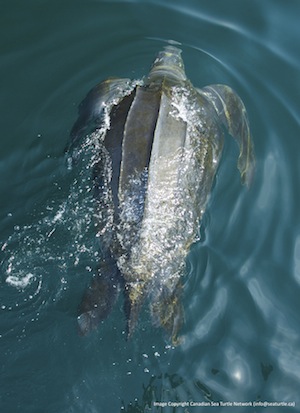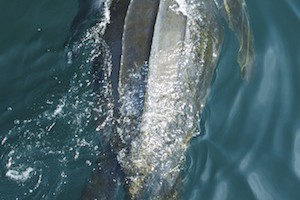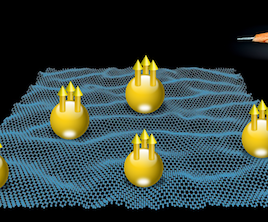
Leatherback turtles like this one — photographed off the coast of Cape Breton Island — rely strongly on the heat produced as they digest their jellyfish meals to keep themselves warm in the cold waters off Canada’s Atlantic coast. (Photo credit: Canadian Sea Turtle Network)
Scientists have determined that metabolic heat produced from digesting prey is a key component of what keeps leatherback turtles warm in the cold waters off Canada’s Atlantic coast.
Researchers attached temperature monitors to seven leatherback turtles off the coast of Cape Breton and discovered that they cool down during the day (most likely due to feeding on cold prey) and warm up at night (as they digest the prey.)
On average, turtles kept their body temperature 10 degrees higher than the surrounding water; the authors estimate that up to half of the heat required to maintain this temperature comes from the process of digesting its prey.
Original research paper published in the Journal of Experimental Biology on July 2, 2014.
Names and affiliations of selected authors

